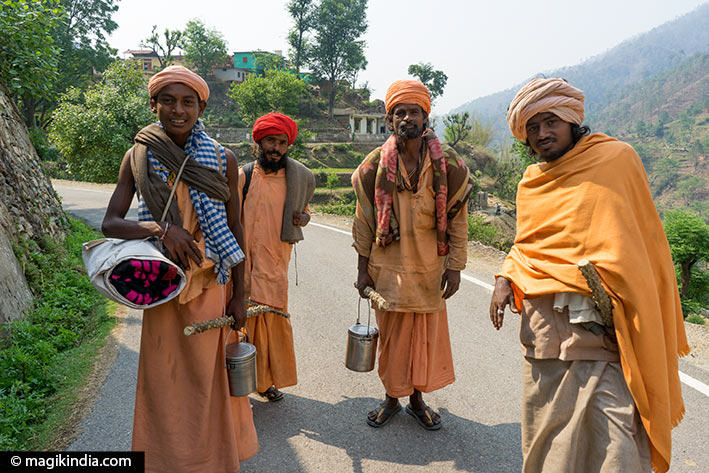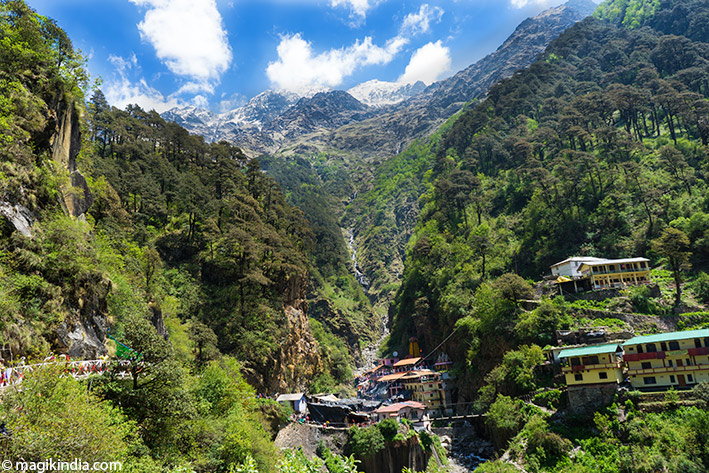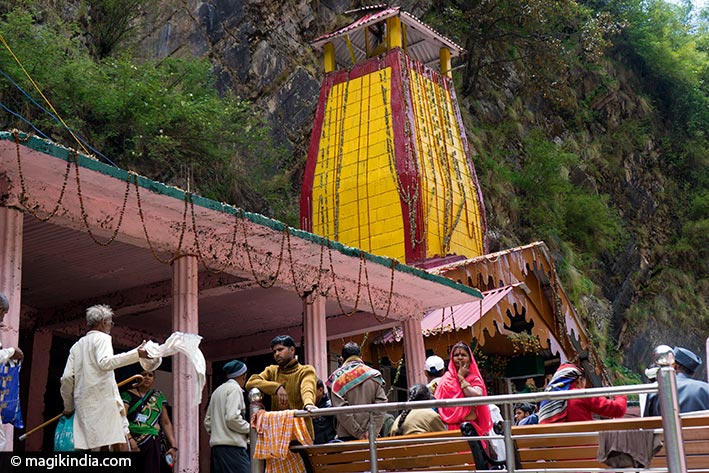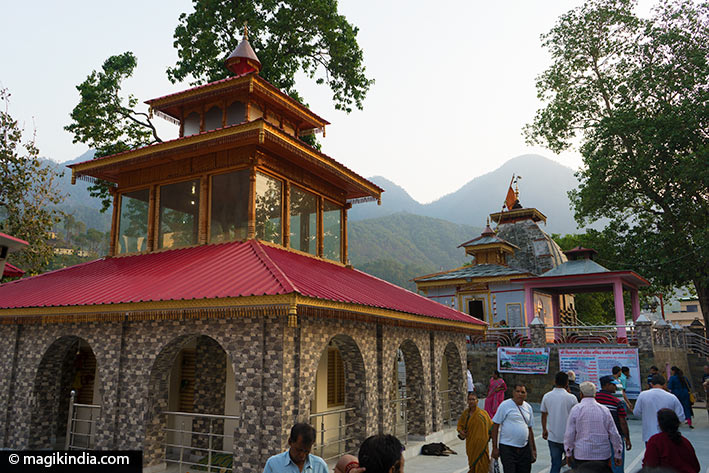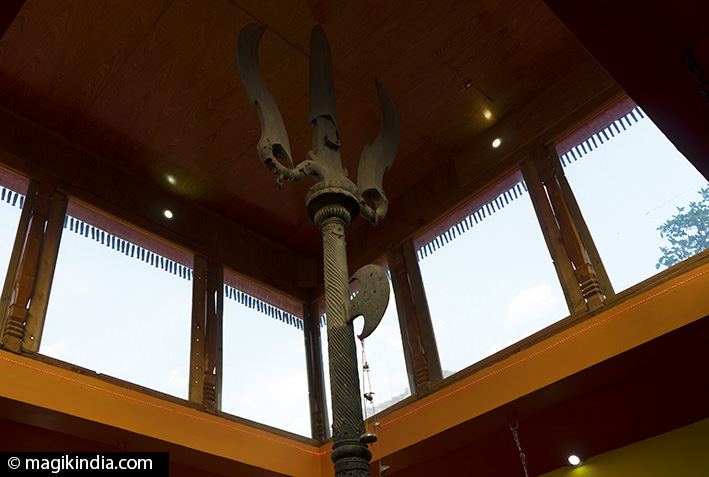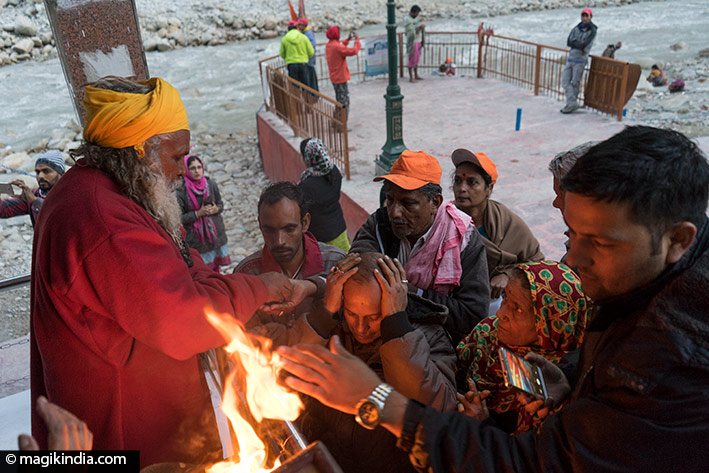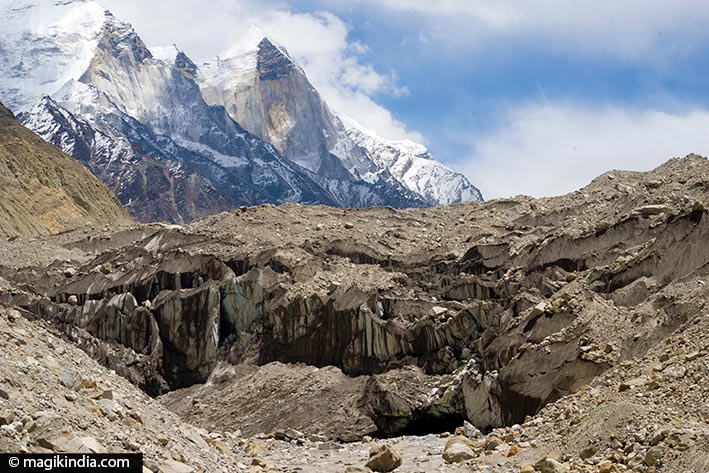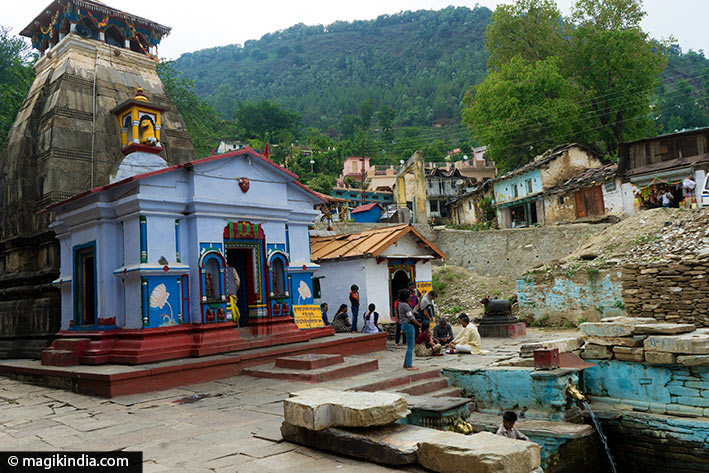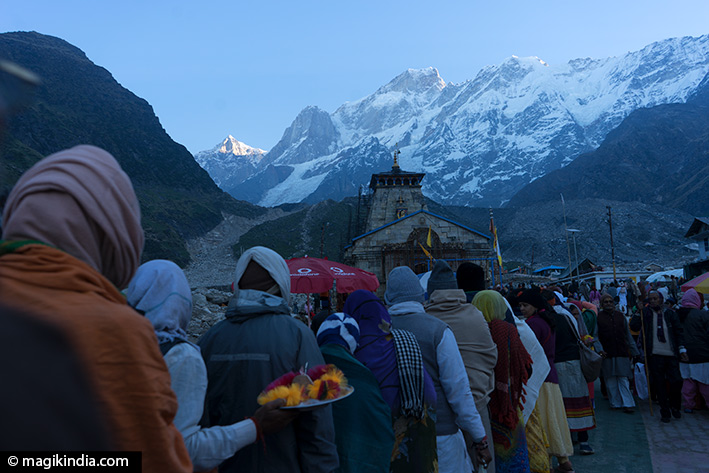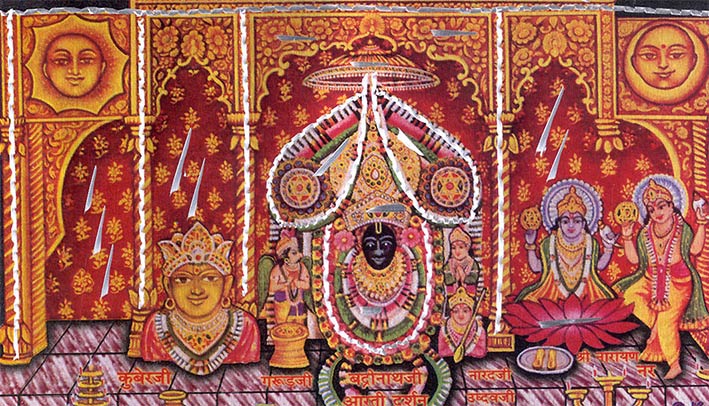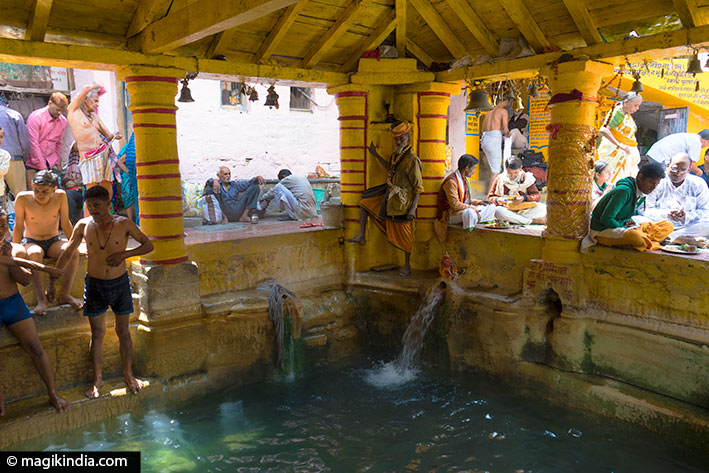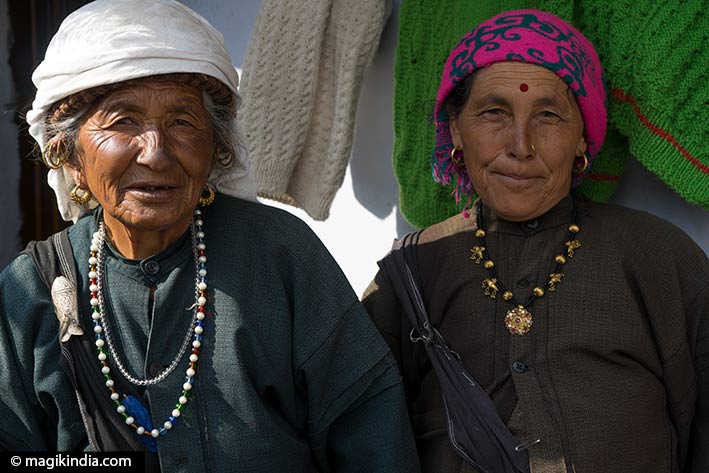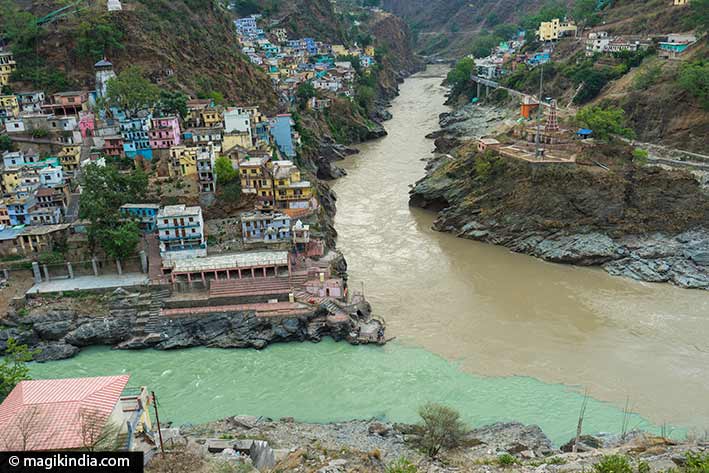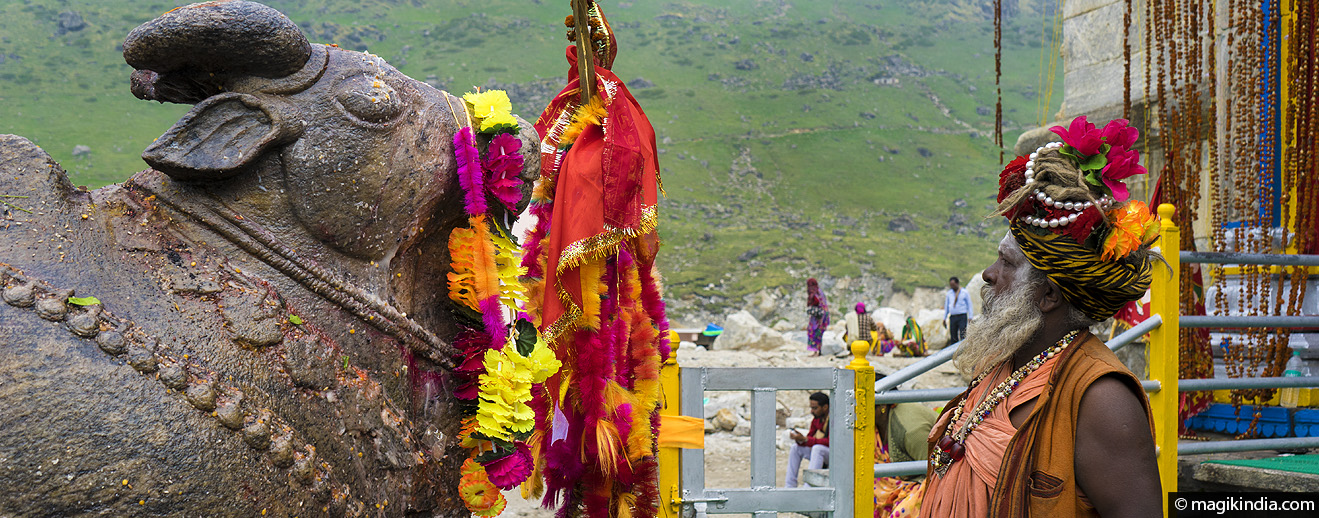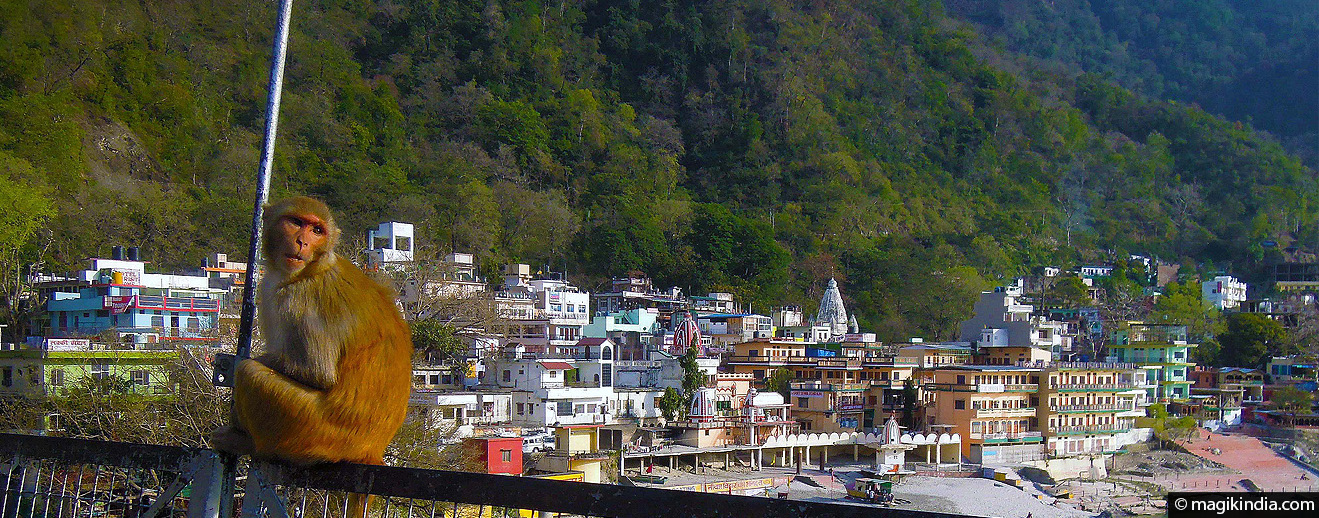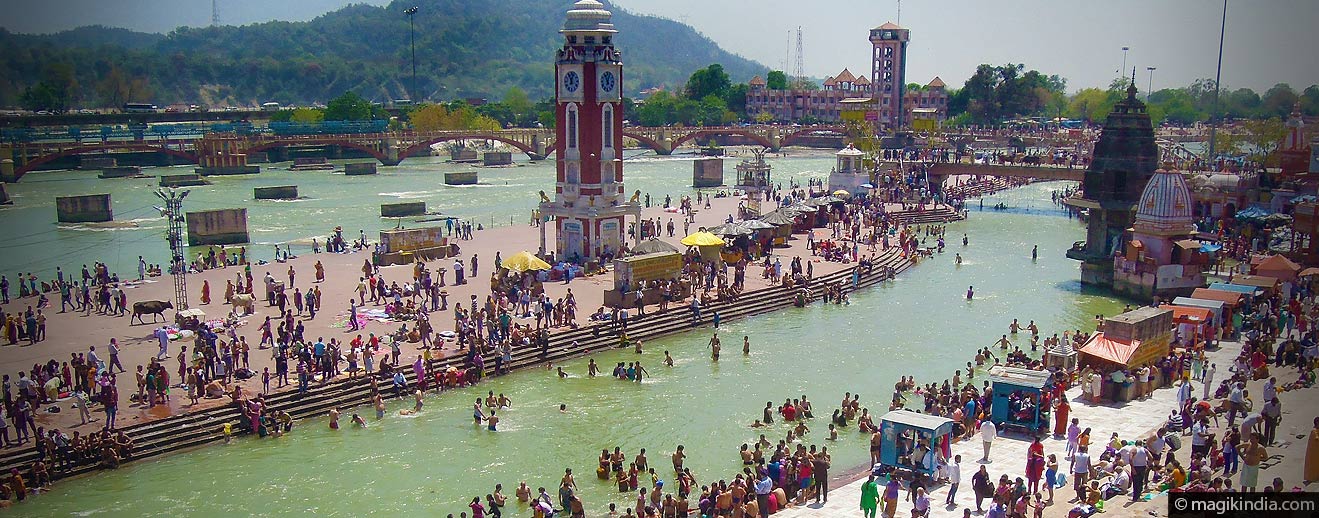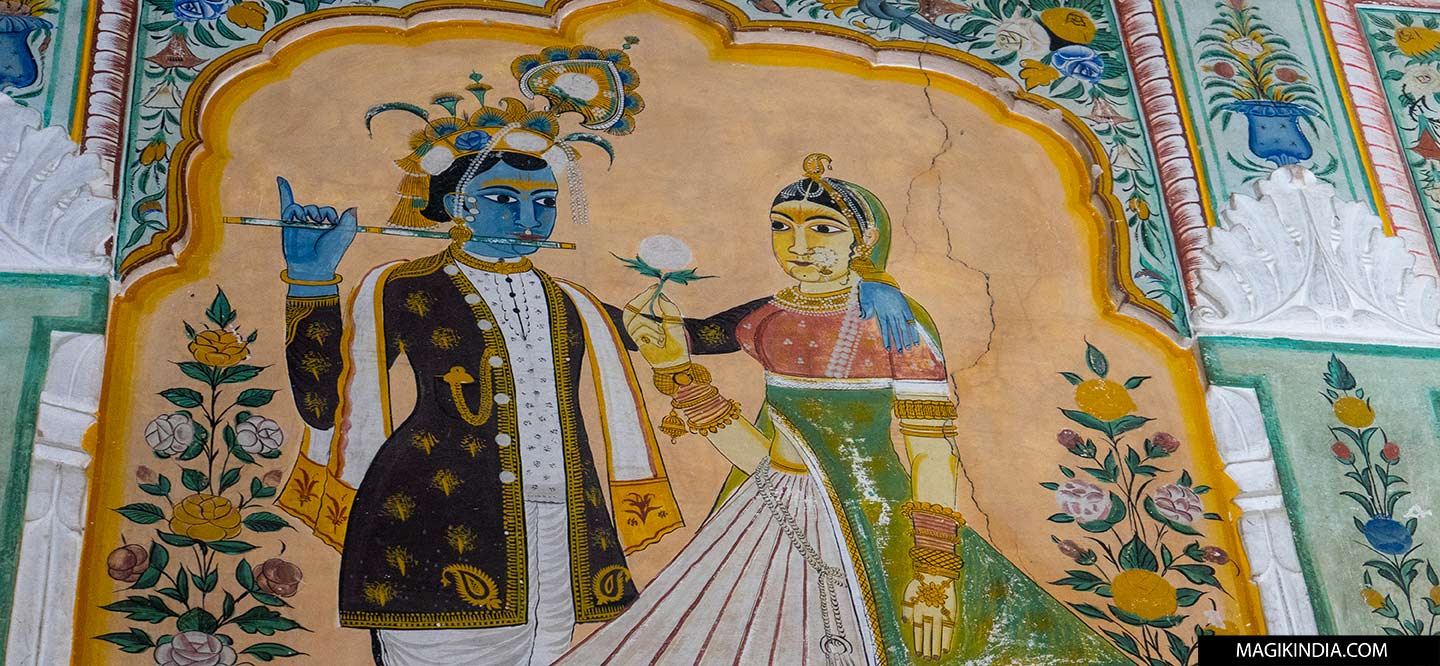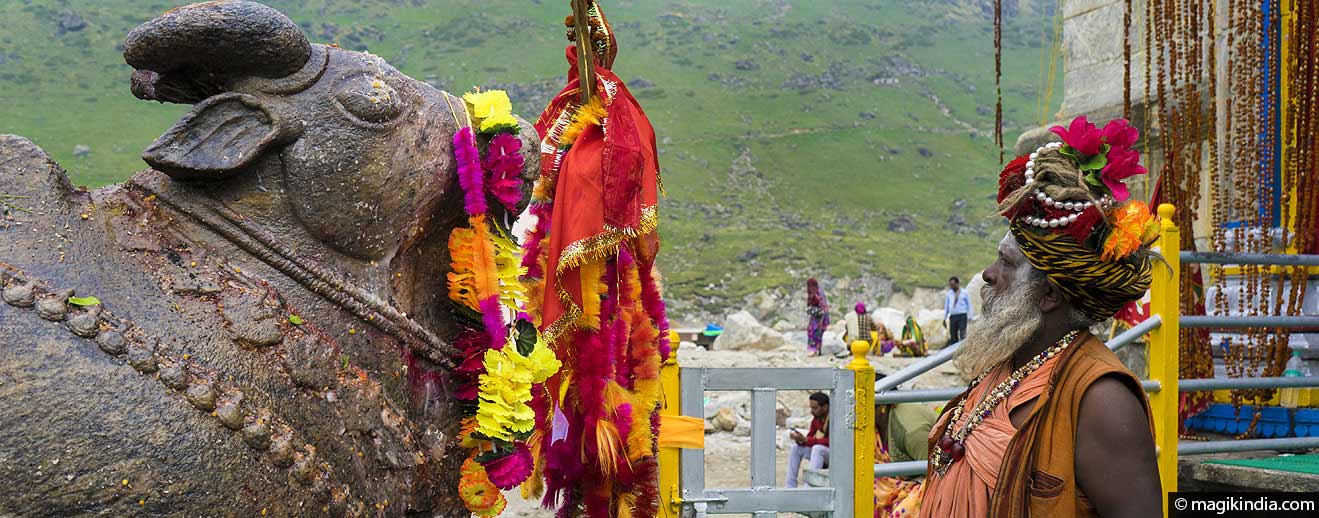
Himalayan Char Dham
![]() Char Dham, meaning ‘four abodes’, is the pilgrimage circuit around the four most revered pilgrimage sites in all India. These are in Badrinath, Dwarka, Puri and Rameshwaram. Over time, another Char Dham pilgrimage circuit has developed, in Uttarakhand state in North India. It is known as Chota Char Dham, ‘the four small abodes’ or ‘Himalayan Char Dham’.
Char Dham, meaning ‘four abodes’, is the pilgrimage circuit around the four most revered pilgrimage sites in all India. These are in Badrinath, Dwarka, Puri and Rameshwaram. Over time, another Char Dham pilgrimage circuit has developed, in Uttarakhand state in North India. It is known as Chota Char Dham, ‘the four small abodes’ or ‘Himalayan Char Dham’.
Hindus believe that a pilgrimage or yatra around the Char Dham cities opens the way to moksha, liberation from the cycle of deaths and rebirths. They also think that every believer should try to visit each of these places at least once in their life.
Most pilgrims start their Chota Char Dham pilgrimage at Haridwar. Others set off from Rishikesh, or from Dehradun, capital of Uttarakhand. From there, the tradition is to visit Yamunotri, Gangotri, Kedarnath and Badrinath in that order.
[box]
Before you start your yatra…
BEST TIME TO GO
The four pilgrimage destinations are accessible only for six months (May to October) throughout the year but I strongly advise you to avoid the rainy season (from July to septembre). So the best time to go is: May to June and September to October.
PERMITS
The Kedarnath pilgrimage requires a permit and a medical check-up (see below). Try to plan your trip in advance to avoid the queues and delays.
FOR LONESOME TRAVELERS
If you travel alone, I would suggest you to hire a guide or to join a group during the treks. Mountains can be unpredictable.
PHYSICAL PREPARATION
Although the treks for Yamunotri and Kedarnath pose no particular problem for sports practitioners, other people are strongly recommended to undertake some physical training before starting the pilgrimages.
TRANSPORTATION
If you have time, buses are available to and from the four destinations. Renting or/and sharing a car is the best option. It allows you to stop and visit different places of interests on the way.
[/box]
Yamunotri
Distance: 220km from Rishikesh
Yamunotri – the first ‘dham’ – 3300m up in the Garhwal Himalayas, marks the source of the Yamuna, one of seven India’s most holy rivers.
To reach it you need to trek 13km. For those who can’t trek, poneys and doli-bearers are available at Janki Chatti where the yatra starts.
Yamuna temple, on the left bank of the sacred river, was built by Pratap Shah, a 19th-century Maharaja of Tehri Garhwal. The idol is made of black marble. For Hindus the Yamuna, like the Ganges, has the status of a holy mother.
Near the temple there are a few hot springs where the water gushes out of the mountain cavities. Pilgrims can enjoy those holy relaxing waters.
One of these hot spring is called Surya Kund. Potatoes and rice tied in a cloth are cooked in it and they are taken back home by pilgrims as a ‘prasad’ (sanctified food).
Near the Surya Kund, there is a ‘Shila’ (rock) which is considered as sacred. The Dibya-Shila as it is called is worshipped by the devotees before entering the main temple of the goddess Yamuna.
On the way to Gangotri…
Uttarkashi
Uttarkashi, is one of the most interesting stops on your way to Gangotri, mostly due to its ancient temples.
Uttarkashi, means ‘Kashi of the north’. The name of the town reflects its similarity to the city of Kashi (Varanasi). Similar to Varanasi, town of Uttarkashi is situated on the Ganges, has a ghat called Manikarnika Ghat and has a temple dedicated to Shiva (Kashi Vishwanath Temple) in the center of the town.
Kashi Vishwanath Temple is the most famous temple in Uttarkashi. It is dedicated to Lord Shiva represented by a Shivalingam of 56 cm in height.
The present temple was built over the pre-existing ancient altar, in the year 1857 A.D. by the queen of Tehri Smt. Khaneti Devi in the traditional Himalayan temple architecture. The legend has it that the sage Rishi Markandeya had so much love and devotion to lord Shiva that the lord himself protected the sage from Yama, the God of death, who came to take the sage’s life at this very place where the temple is situated.
Opposite to the Vishwanath temple is the intriging Shakti Temple. Goddess Durga, is found represented here as a giant trishul or trident (6 meters in height), which is estimated to be over 1500 year old and is regarded as one of the oldest relics of Uttarakhand.
The trishul has a magical feature. It vibrates only when you apply pressure with one of your fingers… 🙂
Gangotri
Distance from Yamunotri: 220km
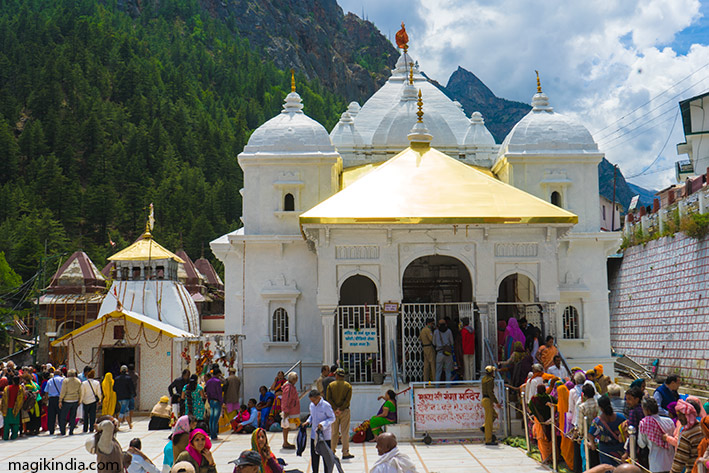
Ganga temple
Gangotri is a town near the source of the Ganges, more than 3000m above sea level in the Garhwal Himalayas. No trek is needed. According to Hindu legend, it was here that Goddess Ganga descended when Lord Shiva released the mighty river from the locks of his hair.
India’s holiest river is called Bhagirathi at its source and Ganga (Ganges) after it reaches Devprayag, where it is joined by the Alaknanda river (see below).
The actual source of the river is at Gaumukh on the Gangotri glacier, 18km from the town. Gangotri temple was built by the Gurkha general Amar Singh Thapa in homage to Mother Ganges.
The evening arati (flame offering) to Ganga river and in the Ganga temple are worth seeing.
Gangotri has many accommodations but with basic facilities…don’t expect hot water in your room 😉
[box]
Trekking in the Gangotri National Park
From the town of Gangotri several scenic treks can be done. A permit is required from the Forest Office Department, in Uttarkashi or directly in Gangotri. In order to control the number of people travelling on this ecologically sensitive area, the Governement of India has introduced the permit system to allow only 150 people per day.
The Gaumukh glacier trek (the source of the Ganges) is the most famous and offers stunning views of Mount Shivling and the Bhagirathi group of mountains. It lies at 4255 m above the sea and can be reached after a18 km trek from Gangotri.
For the advanced trekkers, the Tapovan trek is a must.
[/box]
On the way to Kedarnath…
Triyuginarayan Temple
At a distance of 10 km from Sonprayag, stands Triyuginarayan, an ancient Hindu temple dedicated to Lord Vishnu. It is believed to have been built by the saint Adi Shankaracharya.
This temple is famous because it is said, according to mythology, that this place is where the celestial marriage of Lord Shiva and goddess Parvati took place. Mythology states that Shiva proposed to Parvati at Guptakashi (on the road to Kedarnath) before they got married in the small Triyuginarayan village.
The god Brahma was the priest of the wedding, thus a Brahma Shila (a rock) in front of the temple also marks the exact place of the wedding.
A special feature of this temple is a perpetual fire, that burns in the temple. The flame is believed to burn from the times of the divine marriage. The pilgrims who visit this temple consider the ashes from the burning fire as holy and carry it with them. It is also believed that ashes from this fire are supposed to promote conjugal bliss.
Kedarnath
Distance from Gangotri: 330km

Kedarnath temple
Kedarnath is situated about 3583 meters above the sea level near the Chorabari Glacier. It is the abode of one of revered 12 Jyotir lingams, symbol of Lord Shiva. The temple is not directly accessible by road. It is reached by a though trek of 19km. For those who can’t trek, poneys, doli-bearers and even helicopters are available.
According to legend, the five Pandava brothers wanted to meet Shiva to ask him the absolution of their murders committed during the war against the Kauravas. Shiva decided to test them and went from town to town to finally arrive at Kedarnath in the form of a buffalo. Bhima, one of the Pandava brothers recognized him. Shiva decided then to sank into the ground, leaving only his hump on the surface. It is this hump that is worshiped in the temple of Kedarnath.
[box]
For the Kedarnath yatra, a permit is required
After the June 2013 floods disaster, Government had restricted the number of tourists per day.
You can either do registration directly at the registration counters or through online registration. www.onlinechardhamyatra.com
Now, you also have to obtain a medical fitness certificate. This certificate can be obtained from the medical centers at Guptkashi and Sonprayag.
At Sonprayag check post, the police check your medical certificate and registration card.
[/box]
Basic accommodations are found all around Kedarnath Temple. Even though the consequences of the 2013 floods disaster can still be seen, the place keeps its mystic vibes. The evening arati and the morning darshan – when the sun rises slowly over the mountains horizon – are uplifting moments.
Badrinath
Distance from Kedarnath: 230km

Badrinath temple
Badrinath – the last ‘Dham’ – stands on the river Alaknanda, 3000m above sea level in the Garhwal Himalayas. No trek is needed.
According to the sacred Bhagavata Purana texts it is at Badrinath that Vishnu, in his incarnation as Narayana, performed a great penitence for the wellbeing of all living beings.
The town’s main attraction is Badrinath temple. Legend has it that the sage Adi Shankara found a figurine of the god Badrinarayan (Vishnu) made of holy black saligram stone in the river Alaknanda. It was kept in a cave near the Tapt Kund hot springs until the 16th century when the king of Garhwal had it moved to its current temple.
The image of the presiding deity worshipped in the temple is a 1m tall, black shaligram stone statue of Vishnu in the form of Badrinarayan. The statue is considered by many Hindus to be one of eight swayam vyakta kshetras, or self-manifested statues of Vishnu.
Just below the temple, there is a group of hot sulphur springs (Tapt Kund) which are considered to be medicinal; many pilgrims consider it a requirement to bathe in the springs before visiting the temple. The springs have a year-round temperature of 55 °C.
The evening bhajans (devotional songs) in Badrinath are just a delight, not to be missed!
While in Badrinath…
Mana village
3 km away from Badrinath, there is Mana, the last village before the border of India and Tibet/China. It lies on the bank of the Saraswati river, one of the 7 sacred river of India.
The inhabitants belong to Bothias, a group of ethno-linguistically related Tibetan people. They are skilled in making garments (scarves, blankets, carpets..) made out of sheep wool.
Mana is connected to the Hindu mythology. It is said that the Pandavas brothers had passed through Mana during their trip to heaven. A bridge called bheem pool id said to have been built by Bheem, one of the Pandavas brothers.There are also small caves to visit; one is named Vyas Gufa and it is believed that Maharshi Vyas composed the Mahabharatha in this cave. One more cave is called Ganesh Gufa.
Mana is also the start of many scenic treks.
On your way back to Rishikesh…
Devprayag
Devprayag is where Alaknanda and Bhagirathi rivers meet and take the name Ganga or Ganges River.
Traditionally, it is considered to be the place where sage Devasharma led his ascetic life, giving birth its present name, Devprayag. It is one of the five sacred confluences in the hills and is an important place of pilgrimage for devout Hindus.

